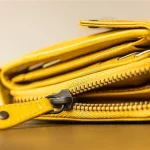It can be difficult to keep up with all the new ideas and approaches in early retirement, FIRE or otherwise. The good news is you have more choices to choose the path that best suits your financial needs.
Lean FIRE is another popular retirement strategy. As the name suggests, you will be reducing your financial burden while still ensuring that you achieve success.
You’ll aim to achieve 25x your annual expenditures, just like any other type of FIRE.
Lean FIRE can help you to “shave the fat” from your finances and be more frugal in order to achieve your retirement goals.
You’ll find out everything you need about Lean Fire and whether it is a good money move for your situation.
Table of Contents
FIRE Definition Recap
What is Lean Fire?
How much do you need to lean fire?
Lean Fire: Pros and cons
What You Need to Know About Lean Fire
Is Lean FIRE Right For Me?
Lean Fire Alternatives
FIRE Definition Recap
Lean FIRE is a part of the FIRE movement. You probably already know that “FIRE” stands for Financial Independence, Retire Early.
This lifestyle method is designed to help you build wealth over the long-term. This method involves cutting expenses, aggressive debt management, and building up savings in order to enable individuals and couples retire as early as 30s and 40s.
What is Lean Fire?
Lean FIRE allows you to retire earlier than the normal age of 60+ but at a lower cost of living. Spending less than the average American will allow you to save 25x more.
Lean FIRE is a method that can help you reduce your spending even further. Whereas other versions of FIRE focus on increasing income, Lean FIRE encourages minimalist living.
Lean FIRE participants will aim to save 25x the amount of their annual expenses, and live on a lower income during retirement.
If you live in a tiny house or van, you can reduce your costs. Or, if you don’t have children, then consider moving to a lower-cost region of the country. Your savings will be invested and saved to earn compound interest.
How much do you need to lean fire?
There is no right answer. The amount of money you will need depends on your age, the number of years that you have worked and your expenses.
There is plenty of information available from those who have done it before to help you.
Calculate the amount of money you need to invest and save to earn an annual passive income equal to or greater than your current living standard.
Simple Formula
The formula for calculating your total annual expenditure is 25x. If you spend $35,000 on average per year, then you would need $875,000 of savings and investments.
The lower your number is, the more you will need to save and invest. With the 4% rule, if you spend only $26,000 per annum, you would only need $650,000 to support yourself in retirement.
You must do the following to use Lean FIRE:
Spend less and save more!
You can live with less and less in future
Invest aggressively and save 25 times your monthly living expenses
Lean Fire: Pros and cons
As with other methods of financial independence there are both pros and cons. If early retirement is appealing to you, only you and your family can decide what will work best.
Lean Fire: Pros and Cons
- Financial Independence in a Fast Track
Lean FIRE can be a quick way to reach financial independence and long-term stability. If you are able to manage lifestyle changes, and save and invest consistently throughout your life, Lean FIRE can sustain an early retirement. You will have financial security, without working. - Support a Minimalist lifestyle
To save money, you may decide to switch to public transportation or a vegetarian lifestyle. These choices can also help reduce your environmental impact.
Lean FIRE is a great movement for those who are looking to live a minimal lifestyle without being focused on material things.
- Finding Cheap Thrills
Lean FIRE helps you find creative ways to spend your time. You could spend your weekends fishing and camping at a nearby lake instead of going to the movies or bowling.
Lean FIRE encourages everyone to enjoy free activities. It could be the start of a new passion or hobby!
- Reduce Stress Levels
The Lean FIRE movement can reduce your stress and anxiety about money by creating a financial plan that you stick to.
Financial pressure can be a major source of stress for many people. This mental strain can affect our health and our mind. Lean FIRE can help you to overcome these feelings as it is a lifestyle that produces results quickly.
Cons of Lean Fire
- Lifestyle Restrictions
Budget-conscious people will have to make some sacrifices and prioritize their expenses. Lean FIRE puts even more pressure on your finances, since you’re expected to reduce your expenses by 20%.
Lean FIRE participants will decide what they will reduce. For some, it will be Netflix, eating out, etc. While it’s possible to live a minimalistic lifestyle as a New Years resolution, living that way for several years or decades will take its toll.
- Patience is Required
Lean FIRE requires time and planning. If you are considering early retirement, you probably haven’t reached financial independence.
It’s fine, but you must be prepared to make good financial decisions and do research before joining the movement. If you want to live a sustainable life, you must mentally prepare yourself before starting your journey.
- Passive Investments: Reliance on Passive Investments
Like all FIREs, those who participate in this movement rely heavily on passive income sources such as the stock market.
Normal times present little risk, as the investment can be left for many years, and will grow at least with inflation.
In 2020, the stock market will have fallen by approximately 40% because of the coronavirus. This meant that people who had reached financial independence were hit with a significant reduction in their total funds.
While this was fortunately a short-term event, it affected those who depend on dividends and investments returns to build their nest eggs. Imagine a prolonged bear market, or even a recession.
- It’s More Challenging with a Family
Lean FIRE can be difficult if you are a parent. It is more difficult to maintain your ideal budget if you have children.
The average cost to raise a child up until the age of 17 is $233 610. The average cost of raising a child for low-income married couples is $174,690. SpendMeNot reports that low-income parents raise their children from birth to age 17 for an average of $172,200.
It’s not impossible, but you’ll need to be more disciplined and frugal to maintain a lean financial life over the long term.
If you’re single or married with no intention of having children, Lean-FIRE is a viable option for early retirement.
What You Need to Know About Lean Fire
Are you prepared to achieve Lean FIRES and start on the road to early retirement? You can achieve this by keeping a few points in mind.
Where you live
You can decide if you are able to achieve Lean FIRE by determining where and how you live. Research states and cities that have a low-cost of living but fit your lifestyle. You may not want to move to New York City or San Francisco.
Reduce the size your home. Consider a tiny home, which offers mobility and all the amenities you require. This has become very popular and could be a good option for you.
You can also live rent-free with a van to replace your mortgage. In recent years, vanlife has become increasingly popular with both millennials as well as older generations who choose to live a nomadic lifestyle on the road.
Living in a van is a great way to travel for less money if you are able to work online.
How to spend your money wisely
When you are ready to buy, follow the 30-Day Rule. This will help curb your impulse spending, and develop better money habits to achieve long-term success in Lean FIRE.
You will also become an expert in budgeting.
Your overall success will be determined by your ability to stick to your budget and analyze it. You can start by reading my article on budgeting 101 if you’re not sure how to get started.
Invest more aggressively
Consult a financial adviser or do some research to find the best tax-advantaged accounts for your money.
Advertisement
It’s not good to see your hard-earned money slipping behind inflation. So, one of your first moves should be to make sure your money is in an account that earns a lot.
Company 401k
Traditional IRA or Roth IRA
Lively Health Savings Account
High-yield Savings Account
Taxable brokerage account
Passive Income Streams
Create passive income streams to complement your current finances and generate sustainable long-term revenue.
You could monetize a blog by renting out a space in your home or Airbnb, start a YouTube channel, flip books, etc.
Discover side hustles to boost your savings and investments. They can also be a reliable source of income while you prepare for financial independence.
Lean FIRE Tools for your journey
Personal Capital allows you to track your net worth, investment, spending and much more.
Blooom can monitor your 401ks or IRAs. Free recommendations, catching hidden fees and more.
YNAB, or Savology. These budgeting tools will help you stick to your budget.
Is Lean FIRE Right For Me?
Lean FIRE is not the best choice for everyone. Lean FIRE is a great option for those who are able to live on less and even be extreme in their frugality.
If you are willing to move to another state or country to save money, Lean FIRE is also a good option.
This is not for everyone but it can be a great way to retire early, escape your 9-5 and W-2 job and require much less money than, say, Fat FIRE.
Lean Fire Alternatives
Traditional Fire
Traditional FIRE is a good option if you want to save and invest more, but not have to supplement your income.
Fat FIRE
The Fat FIRE movement, in contrast to Lean FIRE’s early retirement and financial independence with a higher cost of life.
Coast FIRE
CoastFIRE encourages young participants to invest a large portion of their income while they are still working, so that in the future, they can achieve financial independence.
Barista Fire
You can work part-time and retire early, similar to Coast FIRE. This will help you cover some of your expenses. You can experiment with early retirement while still letting your investments grow.







